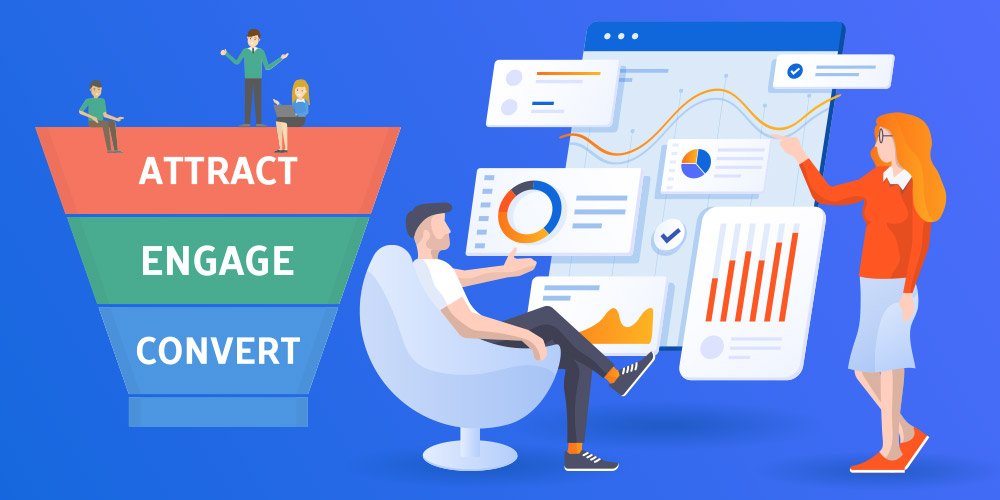An eBook for your personal training business has a number of benefits; they aid in building a relationship of trust between you and your potential clients, they help to create website visits, they are easy to create and can be sent out countless times to many people.
Once it is ready, you have a career asset that is entirely free to distribute!
Part of having an eBook in your marketing arsenal, is that all important task of being able to generate quality leads. If you haven’t already, check out our guide to creating effective lead magnets for your business.
1. Choose your topic
First and foremost, determine what your eBook will be about. Look at who you want to target and consider topics they will most likely find interesting. ‘Booty Building’ guides are all the rage at the moment, or perhaps your clientele would be more interested in ‘IIFYM’ (If It Fits Your Macros)?
Once you’ve decided on a topic, research, research and research some more. At this stage, an idea for a title should be forming. Think of something that neatly sums up your content, yet is catchy enough to entice a reader.
2. Outline each chapter, write content
The easiest way to organise your content, is to begin with a clear structure. Think of your eBook as a crash course on your chosen topic. What key points do you need to consider to best educate your audience? Look at other eBooks for inspiration if you are stuck, a basic structure for a fitness eBook could go as follows:
- Cover
- Table of Contents
- Introduction
- Tip 1
- Tip 2
- Tip 3
- Tip 4
- Conclusion
- CTA’s (Call To Action) and Promo material
As you are writing copy, ensure you maintain consistency across each chapter. This helps to establish natural transitions, so there’s clear progression as your reader goes from one page to the next. Draw your reader to key points by using bulleted lists, italics, bold text and font size changes. This makes it easier for the reader to remember key information, and breaks up the monotony of endless paragraphs.
Once each chapter is completed, proof-read and revise your content, removing any superfluous information. It may even pay to have someone else read through your copy who can pick up any errors you may have overlooked.
3. Insert ‘Call-To-Actions’ (CTA)
CTAs are a marketing term for a link or visual object that entice a reader to take a specific action. Since your readers have already converted into leads to get a copy of your eBook, using CTA’s will help them make further choices to get more involved with your company. It could be as simple as leading to another offer, your online coaching sessions, or a product in your shop.
Strategically placed calls-to-action, or CTAs, not only optimise your eBook for Lead Generation, they entice the reader at the appropriate place. For example, if you have a section in your eBook on Nutrition, you can easily include a hyperlink that leads to the Nutrition section on your website, with a special offer landing page for eBook leads only.
Be mindful not to overdo it here. Your reader needs clear direction and overwhelming them with too many options will just confuse them. Try to stick to one primary and one secondary CTA, and include subtleties like social sharing icons.
4. Design layout
Here is where your eBook can go from looking rather lacklustre DIY, to ‘This could be a magazine!’ Leaving the design up to the professionals, means your eBook stands out, is reader friendly, engaging and supports your marketing goals. When your eBook looks polished and professional, it not only aids your brand recognition, but it boosts your credibility as a business.
We often hear the phrase ‘Don’t judge a book by it’s cover’, but the truth is, the internet reader is just as picky. A designer can also work on a quality cover page for your eBook, which will garner attention and interest in the material.
5. Select your images
If you have any professional photos of you or your business, we recommend including them in your eBook. This adds personality and encourages a positive relationship with the reader. There are also millions of professional stock images you can use from sites such as shutterstock. Just make sure they match your content and overall look.
6. Landing Page
The landing page is an area on your site that promotes your offer and provides a form for visitors to enter their details and claim their eBook. This is how you’re able to convert visitors into leads, so you will need to limit text and links, and provide a clear and obvious direction for the visitor.
7. Promote and Track
Once you have a dedicated landing page, share the URL across all your marketing platforms. This includes social media posts, your website homepage or paid advertising. Consider publishing an except of your eBook as a blog article, with a call-to-action at the end of your post to encourage further reading.
To measure the success of your eBook, employ marketing analytics that give you insight into how many downloads, clicks and leads converted to customers for your business. This will be invaluable info for any future eBooks you create.
Conclusion
eBooks are a great way to turn online browsers into lifetime customers, if done correctly.
To help you get started with writing your new eBook, we have created a bunch of free resources for you to download today, click below.
And remember, we’re here to help with any questions or assistance with design, web or landing page development right through to any marketing services required, so don’t be a stranger. You can contact us on: info@lethal.com.au





